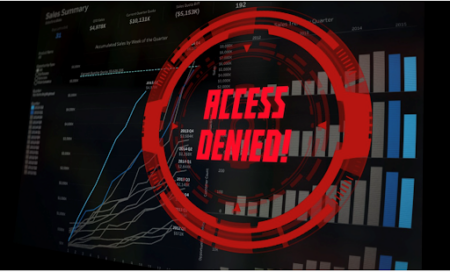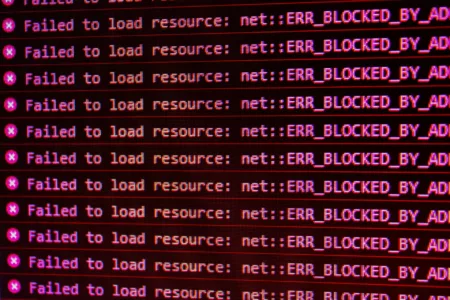30 July 2025
By Roger Kennedy
roger@TheCork.ie
Understanding the DORA Register of Information

Modern life replies on computers
The Digital Operational Resilience Act (DORA), which will fully apply across the EU by 2025, is fundamentally reshaping how financial institutions manage and monitor their ICT (Information and Communication Technology) risks. In Ireland, where the financial services sector is highly regulated and interconnected with global markets, the DORA Register of Information (RoI) is becoming a critical compliance requirement.
The RoI serves as a centralized record of all ICT systems, services, and third-party providers that are essential to business operations. It helps regulators and internal teams understand critical dependencies, risks, and continuity measures. For Irish institutions, especially banks, insurance companies, and investment firms, implementing this register correctly is vital to ensure not only compliance but also operational resilience in an era of growing cyber threats.
Why the DORA RoI Matters for Irish Financial Institutions
Irish financial institutions operate in a competitive environment where digital systems and cloud-based services are deeply embedded in daily operations. As a result, vulnerabilities in ICT infrastructure or third-party vendors can have significant consequences, both financially and reputationally.
The DORA RoI acts as a single source of truth that allows institutions to:
- Identify and document all critical ICT services and providers.
- Monitor vendor performance and risk exposure.
- Maintain readiness for audits and regulatory checks.
- Respond quickly to incidents or system failures.
Given the Central Bank of Ireland’s increasing emphasis on operational resilience, the RoI will soon become a mandatory element of internal governance.
Key Steps to Prepare for the DORA Register of Information
1. Conduct a Complete ICT Asset Audit
Begin by mapping your entire digital ecosystem:
- Identify all software, hardware, and infrastructure components.
- Document third-party vendors, including subcontractors or cloud providers.
- Record contract details, SLAs, and renewal schedules.
This initial audit is the foundation of your RoI and ensures that no critical service is overlooked.
2. Classify Critical and Important Functions
The DORA framework requires financial institutions to identify which ICT services are critical for maintaining essential operations.
- Rank services by their impact on customer services, regulatory obligations, and data security.
- Highlight any single points of failure or high-risk dependencies.
- Establish clear recovery and backup plans for these critical services.
3. Establish a Continuous Update Process
The DORA RoI is not a one-time project but a living document that must be continuously updated.
- Assign a dedicated team or compliance officer to oversee updates.
- Implement policies for adding new vendors or services as they are onboarded.
- Keep a traceable change log for regulatory audits.
4. Align with Risk Management and Incident Response

The RoI must be tightly connected to the institution’s risk management framework:
- Include vendor risk assessments, penetration test results, and audit findings.
- Document incident response protocols tied to each critical system.
- Regularly review vendor performance and compliance with SLAs.
5. Leverage Automation Tools
While spreadsheets and manual records may work for small organizations, they are inefficient and error-prone for larger financial institutions. Fortunately, there are specialized tools and platforms that can:
- Automatically collect data from procurement and vendor management systems.
- Track contract renewals and vendor compliance metrics.
- Generate audit-ready reports aligned with DORA requirements.
These tools significantly reduce the time needed to maintain an accurate RoI while ensuring real-time visibility into your digital landscape.
Best Practices for Irish Institutions
- Involve All Stakeholders: Include IT, procurement, risk, and legal teams in the RoI process.
- Regular Training: Ensure employees understand DORA requirements and how to report ICT changes.
- Periodic Internal Audits: Conduct mock compliance checks to identify gaps before regulatory reviews.
- Standardized Templates: Use consistent data formats for all vendors and services to avoid confusion.
- Scenario Testing: Simulate ICT disruptions and validate how quickly the RoI can provide actionable information.
The Road Ahead for Ireland

As DORA enforcement approaches, Irish financial institutions have a unique opportunity to strengthen their operational resilience by proactively implementing a robust DORA RoI. Those who act early will not only be fully prepared for compliance but will also benefit from better visibility into vendor dependencies, fewer operational risks, and improved incident response capabilities.
FAQ
1. What is the DORA Register of Information?
It is a structured inventory of ICT systems, services, and third-party vendors critical to an organization’s operations, mandated by the EU DORA regulation.
2. Who needs to comply with DORA in Ireland?
All regulated financial entities, including banks, insurance companies, payment processors, and investment firms.
3. What information should be included in the RoI?
Vendor details, contract data, risk assessments, interdependencies, SLAs, and incident response plans.
4. How often should the RoI be updated?
Continuously, with formal reviews at least quarterly or whenever a significant change occurs.
5. Are there tools available to help build a RoI?
Yes. Various compliance and risk management tools can automate data collection, monitor vendor risk, and generate audit-ready reports.
6. What challenges might Irish financial institutions face?
Data fragmentation, complex vendor networks, and the difficulty of maintaining accurate and up-to-date records.
7. Why is early preparation essential?
Building a comprehensive RoI is time-intensive. Starting early allows institutions to avoid compliance risks and identify vulnerabilities well ahead of regulatory deadlines.
